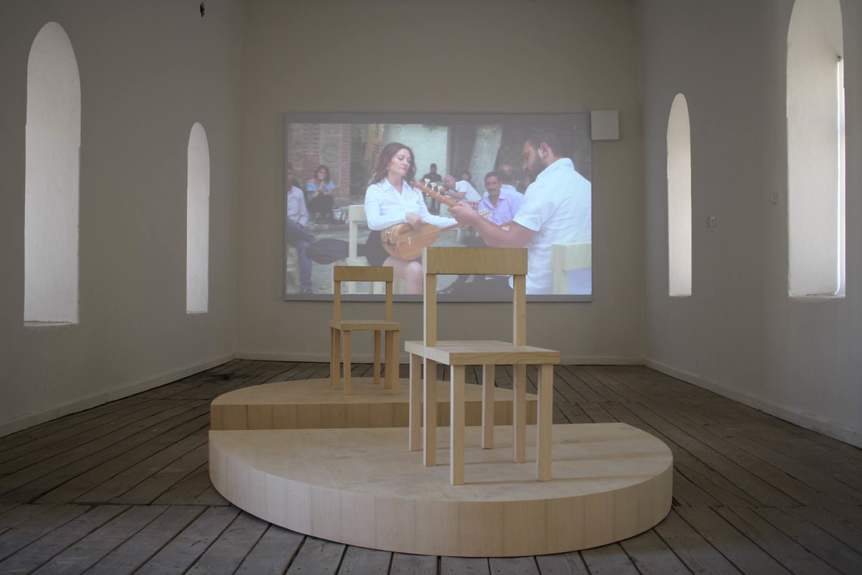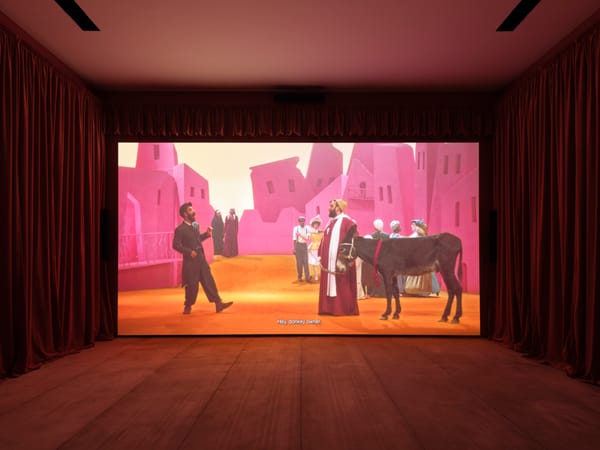Ideas
Cappadox Contemporary Art Program: “Silence”

For thousands of years, humans have carved into the soft volcanic rock of the Cappadocia region in central Anatolia to make their homes. The region became an early center of Christianity, and churches were built deep underground or high inside the cliffs, protecting them against Roman and later Arab and Seljuk armies. The Cappadocian hilltop village of Ortahisar and the Balkanderesi Valley below—where many people still lived in cliff-side cave homes until 50 years ago—was the setting for the Cappadox festival’s contemporary art program. Curated by Fulya Erdemci (who was the curator of the Istanbul Biennial in 2013, among other roles) with Ilgın Deniz Akseloğlu, the exhibition “Sessizlik (Silence)” utilized caves of the valley and spaces in the village for projects by 17 artists, each working with the different histories of the place and region. The idea of silence was widely interpreted and applied, from projects that looked at the long history of hidden Christian communities and their relocation in 1923 population exchanges with Greece, to the killing of young women in Turkey, and even recent histories like those told by a young, deaf boy who recounts his experience fleeing Syria. ArtAsiaPacific will publish a review of “Sessizlik/Silence” written by curator Adnan Misal Yıldız in our Sep/Oct issue. Until then, here’s quick a look around the projects of Cappadox, which ran until July 9.

The town of Ortahisar and Balkanderesi Valley. Below is BABI BADALOV’s multi-part installation Pippa Bacci (2018), which was dedicated to female victims of violence in Turkey. The t-shirts were written with phrases echoing the names of infamous femicides, such as 20-year-old university student Özgecan Alsan, who was killed after resisting rape on a public minibus, and artist Pippa Bacca, who was raped and killed in 2008 while she was crossing Turkey wearing a wedding dress, in a long-duration performance piece between Milan and Jerusalem.

SARKIS ’s neon sculpture Blue Heart (2018) was suspended in a two-story underground church (known as Ali Torun) and it echoes the architecture of the sixth century CE era.

A second part of SARKIS ’s project, located in a pigeon cove, were these 12 ceramic tiles with the plans of old Armenian and Greek churches.

AYDAN MURTEZAOǦLU & BÜLENT ŞANGAR’s project When Does the Minstrel Fall Silent (2018) featured a silent performance by two saz players in a minstrel battle—riffing off one another other—recorded during opening week.

CANSU ÇAKAR’s project was a workshop for women of the village Ortahısar, Hands on Hips Motif Studio referring to a popular motif on Turkish kilims (rugs) for fertility.

İNCI EVINER’s installation Voice of the Notebook (2018) in a former library featured oversized sketchbooks whose pages were turned by fans, the metaphorically representing perhaps the forces of history that have swept through the region.

THE CHAPUISAT BROTHERS built an improvised wooden tower high up in the hills over the valley, The Appendix (2018) that you could climb up into.

The site of HALE TENGER’s sound installation Life, Death, Love and Justice (2018) in which the rocks seem to be whispering koans like “Can you be by not doing?

ROSSELLA BISCOTTI’s A Beast Epic (2018) were imprints of a rhino, elephant, giraffe, and lionness—all animals that used to inhabit the Cappadocia region thousands of years ago.

The project Hidden Worlds (2018) by RAAAF (Rietveld Architecture-Art-Affordances) utilized the abandoned caves of the Balkanderes Valley, filling them with candles at dusk for nights during festival. The flickering candle light evoked the many people who have lived here over the millennia.
HG Masters is editor-at-large of ArtAsiaPacific.







